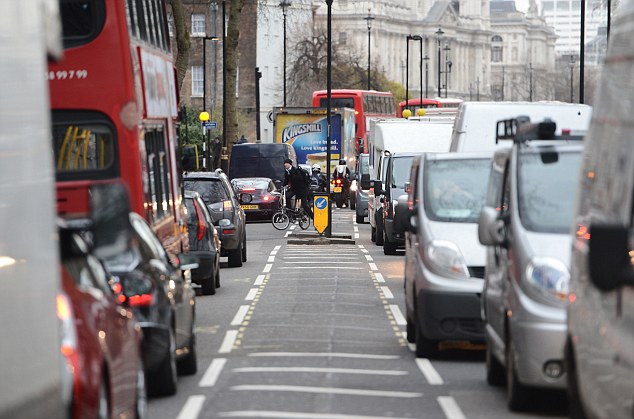Bow Liveable Street Workshops: What was said and what happens next
Missed the recent Liveable Street workshops? These sell-out events got everyone talking about the best way to address rat-running and reduce air pollution, writes Mike Mitchell from the Roman Road Bow Neighbourhood Forum.
Following an online survey gathering local opinions, around 80 people attended the first of several fully booked workshops on the Liveable Streets scheme.
Following the road closure trial on Tredegar Road being suspended due to protests earlier this year, the Council together with Project Centre, the consultants appointed by the Council to lead the project, organised a series of workshops to address local concerns.
Bow is one of the 17 areas across the borough to be included in the Liveable Streets scheme, which is set to take place over four years in four separate stages.
Currently, Bow is in phase one of the programme. According to Project Centre, the suggestions raised during the workshop will be used to refine the options discussed. Firm proposals will then be consulted on during the first half of 2020, followed by implementation later in the year.
Overall, the workshops provided a significant opportunity for local people to address issues that impact our quality of life, and are extremely relevant to our climate change emergency.
During the start of the workshop, findings of the survey and traffic studies were presented. Attendees learnt that approximately 49% of Bow traffic between 6am and 8pm on weekdays is rat-running, the equivalent of over 13,000 non-resident vehicle journeys a day.
Additionally, air quality at the junction between Fairfield Road and Tredegar Road is consistently above the maximum National Air Quality target. The junction between Tredegar Road and Coborn Road also experiences unhealthy levels of air pollution.
Participants were then given maps with several options for reducing cut-through journeys, and improving walking, cycling, and bus services. This led to animated discussions around our tables, demonstrating a keenness to engage with the issues.
There was a small, vocal minority who were resistant to change, but the majority expressed support for action to address rat-running, suggesting a variety of ways to achieve this.
In the second half of the session, participants were asked to consider means such as re-designing junctions, landscaping, and tree planting to make it easier and safer to get around by foot, bike and public transport. A wealth of ideas were suggested, perhaps the most idealistic being a congestion charge for non-residents driving through Bow.
Involving people through co-designing proposals draws on local knowledge of our neighbourhood. It values our contributions, not just those of professional consultants, politicians and Council officers.
However, there are limits to the influence local people have in the process. Project Centre and the Council will need to work hard at communicating information, and ensuring participation is as wide and meaningful as possible in the future.
The Roman Road Bow Neighbourhood Forum has been working since 2016 to develop a Neighbourhood Plan for Bow, a hyper local planning document that aims to reflect the priorities of those who live, work, and study here, and through planning policy, shape developments in Bow up to 2031.
The Neighbourhood Plan provides an opportunity to build on and develop the Liveable Streets initiative. Volunteer members of the Forum are currently working on the first draft, which the Forum will publish in the first half of 2020. It will then be subject to consultation, followed by independent examination, before being put to you, the people of Bow in a public referendum.
If a majority support the Neighbourhood Plan, it will become part of the statutory planning framework, sitting under the new local plan for the whole borough.
Liveable Streets is a short-term programme which has the potential to encourage changes in our behaviour, so that we walk, cycle, and make greater use of public transport, and fewer journeys by car.
How significant these changes will be depends, to some extent, on our future active involvement in the process.



Please consider joining the following group:
https://www.facebook.com/groups/1334148480068685/
I’m so disappointed to read this article as it is so very biased. As an attendee, I’d like to point out some discrepancies and show how the data presented was misleading.
There was no context to the data, just numbers with nothing to compare to. And certainly my understanding was that there was no way of knowing which traffic was “rat-running” as it was called vs people just going about their daily journeys.
The objectives of the plan are still not clear. On one slide it was presented as wanting to reduce the levels of pollution and increase other modes of transport (walking, cycling, and public transport) in the area, yet consistently the discussion was about reducing rat-running. For which there was no clear evidence on what changes there have been in the local traffic levels that now make this an “issue” that needs addressing. Further more, one of the points made was that many of the journeys were recorded to be short ie not rat-running but local people making journeys). (Again no clear data here, but by the team’s own admission most of the journeys are short local journeys).
As was pointed out – the traffic levels are only available as an absolute count. There’s no comparative data available vs other streets outside of the proposed area / vs other time frames / vs other similar areas. There was no data presented on how closing Bow off to traffic would impact on traffic in other local streets and how the increase in standing traffic would impact on pollution levels (vs more flowing traffic spread across roads including Bow streets).
The pollution data shared was not comparative to other roads in the area, nor to the roads where the traffic will be pushed by these plans. The base line it was compared to was WHO data. There was no stats given on the percentage diff vs WHO guidelines (not as quoted above),, only a chart, for which the axes could not be read. We have no idea if we are 1% over WHO recommendations on pollution or 10% as it was not possible to see this. There’s no year on year data / no comparison to other areas etc. making the data somewhat meaningless. We cannot see if we are on an upward, downward or plateauing trajectory.
No data was available on the impact of the short lived trial from earlier in the summer, to understand the congestion on other local (but excluded from this study) roads. When questioned on how such trials are measured, we were told that they measure the impact of closures based on the flow of buses NOT private vehicles. Which is flawed ini itself given that buses often have dedicated lanes which will not be impacted by changes in the flow of other traffic. Interestingly, Bow Road does not have it’s own dedicated bus lanes and it would have been very interesting to see the data from that fated Saturday in August, but surprisingly no data was forthcoming (although traffic data from other local roads was).
It feels as though the council, Liveable Streets and now Roman Road London are all colluding in painting a rosy picture for the benefit of securing TFL funding for this project. As we were all told in a public meeting in August, if the trial does not go ahead, funding will be lost, regardless of whether the trial is well thought through or not.
One final point to add. We were told we had 20 mins to discuss 3 plans and put forward new ideas; for plans which the team have been developing since August. In reality we ended up with a bit longer than 20 mins but to say: “Involving people through co-designing proposals draws on local knowledge of our neighbourhood. It values our contributions, not just those of professional consultants, politicians and Council officers” particularly to say “it values our contributions” feels like an utter stab in the back. How can it be thought that our contributions are valued with 20 minis to discuss then and blatantly no regard given to the tens of ideas put forward by local resident’s at the last meeting in August. (Including some which were re-suggested to be told that something we had previously been told would be discriminatory and therefore illegal, can indeed be done and is a good idea that they should have considered.
To close the said roads would only shift the problem to other ares and as proved in roads all over london only adds to pollution and congestion in surrounding areas placing as we know an enormous strain on main roads which is where traffic will be funnelled causing daily commute and essential journeys to take considerably longer , as a London licensed taxi driver i witness this all over London and we all know what impact it causes most all schemes that have been implemented have cost billions of pounds leaving much needed road space empty for most of the day this puts a heavy burden on emergency services as well and im sure has financial impact on all local businesses